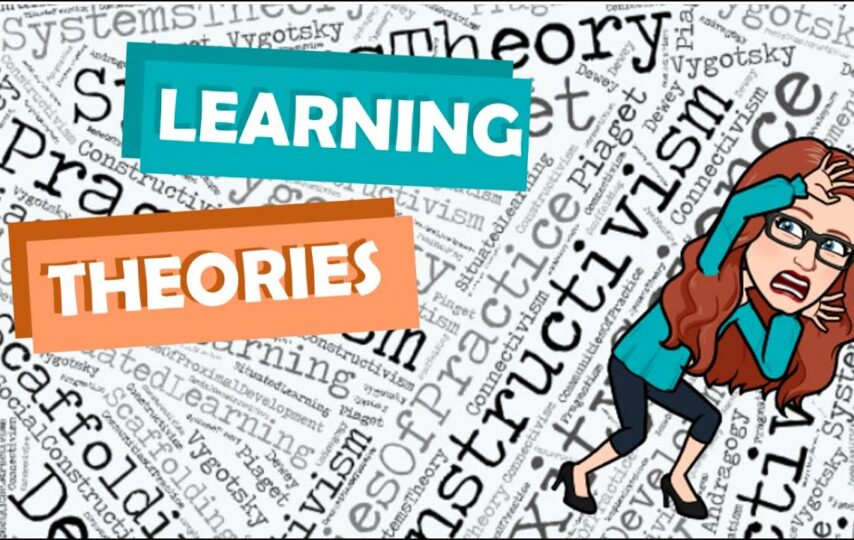Introduction
Numerous elements are at play in the complex web of career growth, influencing people’s decisions and paths. Among the many theories that attempt to explain these processes, Krumboltz’s Social Learning Theory stands out for its all-encompassing perspective and focus on the significance of social interactions in determining professions. This idea, which was created by John D. Krumboltz, offers a distinctive prism through which to comprehend how people navigate their professional journeys.
Understanding Krumboltz’s Social Learning Theory
According to Krumboltz’s Social Learning Theory, which is a complete framework, social interactions, as well as external factors, particularly personality traits and interests, have a substantial impact on job decisions. According to this hypothesis, people learn about vocations through interactions with the people and institutions in their environment, such as their family, peers, teachers, and the media. Through a continual feedback loop created by these interactions, beliefs, goals, and eventually professional decisions are shaped.
Four Key Factors in Krumboltz’s Theory
While Krumboltz admits that social connections are important, he also notes that people have unique genetic characteristics and skills. These genetic gifts, however, are not predetermined; rather, they serve as a base upon which experiences and knowledge can be built.
Environmental Influences: According to the idea, cultural norms, friends, family, and coworkers are just a few examples of the external influences that matter. People frequently style their job decisions and behaviour after the norms they observe in their surroundings.
Individuals can learn through both instrumental learning (direct instruction) and associative learning (watching and imitation), according to Krumboltz. One example of the value of observational learning is when a child decides to pursue a career in medicine because their parents are medical professionals.
Planned Happenstance: This approach emphasises how unforeseen circumstances and chance contacts can have a big impact on one’s career path. Through networking or random encounters, individuals may find themselves on untried yet fruitful career routes.
Application of Krumboltz’s Theory in Career Development
There are various implications for career development practises from Krumboltz’s Social Learning Theory:
Career Counselling: Using this idea, career counsellors might emphasise the value of networking, experiencing new situations, and gaining inspiration from a variety of role models. Encouragement to step outside one’s comfort zone can result in more rich and well-informed job choices.
Education and Training: Using this approach, educators can create lessons that include exposure to the real world. Students can close the knowledge gap between theory and application through internships, mentorships, and group projects.
Understanding the importance of random events can be helpful for those going through professional transitions, such as transferring industries or pursuing further education. Accepting unforeseen possibilities might lead to new opportunities and alter one’s career path.
Diversity & Inclusion: Promoting more inclusive work environments can be done by recognizing the influence of cultural norms and different role models. Promoting diversity in all professions can motivate people from all walks of life to follow their dreams.
Critiques and Limitations:
While Krumboltz’s Social Learning Theory provides a valuable framework for understanding career development, it’s important to acknowledge its limitations and potential critiques. Some critics argue that the theory might downplay the significance of individual agency and personal aspirations. Additionally, the theory doesn’t provide a concrete roadmap for dealing with external factors that can hinder career progress, such as discrimination or economic challenges.
Self-Efficacy and Cognitive Factors:
By include cognitive elements like self-efficacy in the framework, Krumboltz’s thesis has been strengthened. The term “self-efficacy” refers to a person’s confidence in their capacity to perform particular tasks successfully. Famous psychologist Albert Bandura expanded the theory to emphasise the part that self-efficacy plays in shaping job decisions. High levels of self-efficacy can motivate people to seek demanding occupations and persevere in the face of challenges.
Technology’s Influence on Social Learning:
Technology has dramatically changed how people learn and interact with their surroundings in the modern digital age. The influence of social learning has been extended beyond face-to-face interactions thanks to social media, online networking tools, and virtual mentorships. These technological tools increase the theory’s applicability in the contemporary era by allowing people to connect with a variety of role models and experiences.
Cultural and Global Perspectives:
Since Krumboltz’s theory was developed in a Western setting, it’s critical to take into account its applicability across cultures. Cultural expectations, conventions, and values can influence how people view and follow their job pathways. The need for a more complex understanding of how social learning functions in many societies is shown by adapting the theory to various cultural contexts.
Lifespan Approach:
The lifespan is covered by Krumboltz’s hypothesis, which is not restricted to any particular period of life. People constantly pick up new skills from their surroundings, adjust to shifting conditions, and choose careers based on shifting goals and priorities. This lifetime feature emphasises how applicable the idea is from youth through retirement and beyond.
Combination with Other Theories:
Career development is a complex process influenced by multiple factors. Krumboltz’s theory can be complemented by other theories, such as Super’s Developmental Self-Concept Theory, Holland’s Vocational Choice, Durkheim Theory, and Bandura’s Social Cognitive Career Theory. Integrating these theories can provide a more comprehensive framework for understanding the intricacies of career decision-making.
Personal Agency and Adaptability:
Although Krumboltz’s theory emphasizes the relevance of outside factors, it does not downplay the significance of individual agency. People can still make decisions, create objectives, and change their course based on their experiences and changing aspirations. According to the hypothesis, people can increase their chances of discovering rewarding and meaningful professional choices by actively interacting with their surroundings and looking for possibilities.
Long-Term Career Development:
Beyond the earliest stages of career exploration and decision-making, Krumboltz’s idea goes further. It acknowledges that occupations are dynamic and subject to change over time as a result of unforeseen occurrences, changing circumstances, and personal development. This long-term viewpoint motivates people to keep learning, adapting, and looking for new experiences that fit with their changing goals.
Mentorship and Role Models:
The impact of mentors and role models on career development is a key element of Krumboltz’s hypothesis. Positive role models can motivate people by offering helpful advice, direction, and encouragement. Mentoring relationships can provide practical insights that support decision-making and skill development by bridging the gap between theory and practice.
Career Decision-Making Skills:
The need of mastering effective career decision-making abilities is emphasised by Krumboltz’s idea. People must learn how to research possibilities, evaluate them, and make decisions that are consistent with their values and objectives. These abilities are essential not only for choosing a career path, but also for managing transitions and making changes along the road.
Continuous Learning and Adaptation:
The capacity to learn and adapt is essential in a job market that is changing quickly. According to Krumboltz’s approach, people should welcome opportunities for skill improvement and see learning as a lifelong process, whether they come from formal schooling, workshops, online courses, or on-the-job training. The ability to succeed in many work circumstances is improved by this dedication to learning.
Work-Life Balance and Well-Being:
Achieving a balance between work and personal life is a key component of career growth, which goes beyond professional achievement. Indirectly addressing this is Krumboltz’s thesis, which emphasizes the importance of professional choices being in line with one’s values, interests, and general well-being. Living a more happy and satisfying life can be facilitated by choosing a vocation that connects with one’s unique identity.
Ethical Considerations:
Ethical issues are taken into account when people move through their careers. According to Krumboltz’s idea, people should think about the ethical ramifications of their decisions as well as how those choices would affect their communities, themselves, and society as a whole. This understanding promotes making deliberative decisions with care and responsibility.
Conclusion:
By addressing the complex interactions between genetics, environment, learning, and chance, Krumboltz’s Social Learning Theory continues to provide a thorough framework for comprehending career development. We can gain a better understanding of how people choose their job pathways by adding new layers of knowledge, such as personal autonomy, long-term adaptation, mentorship, and ethical considerations. This idea continues to be a helpful road map as we negotiate the complicated and always changing environment of work, reminding us of the significance of taking advantage of opportunities, learning from our surroundings, and designing professions that are in line with our beliefs and objectives.








